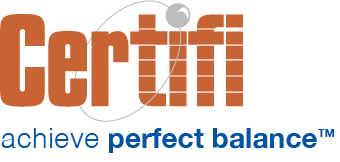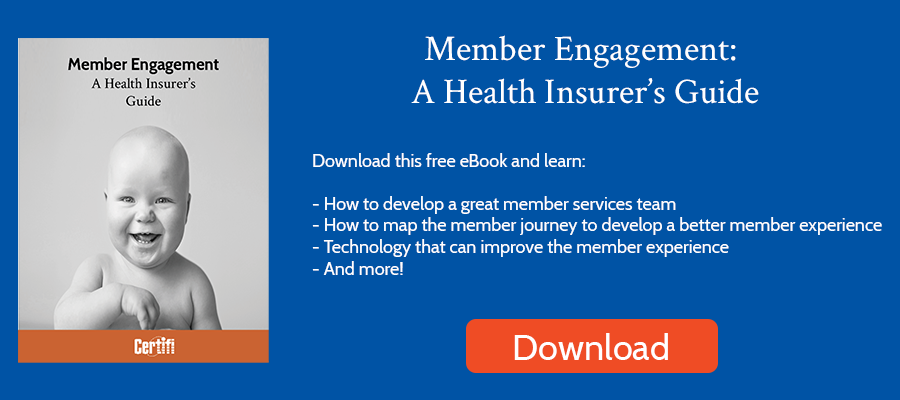It’s likely that if you visit a health insurer’s website, it features happy, smiling members. Most insurers focus on delivering a great member experience to attract and retain members. A poor experience generally leads to member churn and stagnant earnings.
Someone intelligent once said, “You can’t improve what you don’t measure.” So how does a health insurer measure member satisfaction and show improvement over time? The answer lies in a commonly used satisfaction scoring methodology called Net Promoter Score (NPS).
Read on to learn how to leverage NPS for health insurers.
What is NPS?
Let’s start with the basics. NPS is a customer satisfaction metric that essentially measures how likely someone, in this case, a member, is to recommend your health plan. It’s easy to implement because you calculate your NPS score by asking one question. Plus, calculating your score is simple, and it’s easy to benchmark yourself against other health plans. Many of them publish their NPS scores because it’s such a frequently-used metric.
What question do I ask to generate an NPS score?
To generate an NPS score, you need only ask one question: “On a scale of 1 to 10, how likely are you to recommend <COMPANY NAME> to a friend?” You can also ask follow-up questions as part of an NPS survey to gather more detailed information, but answers to the NPS question drive your NPS score.
How do we measure NPS?
Once you’ve received responses to that question, it’s time to run the numbers to calculate scores. First, you need to tally all the respondents who scored you a nine or a 10. This group is called promoters. Anyone who scored you a seven or eight is called passive. Those who score you zero to six are considered detractors.
To calculate your NPS score, subtract the percentage of detractors from the percentage of passives. It’s that simple.
For example, assume 25% of your members scored you from 0 to 6, 35% gave you a 7 or 8, and 40% scored you a 9 or 10. Your NPS score would be 15, which is 40% – 25%.
Most businesses monitor their overall score and each group score – promoters, detractors, and passives. Businesses monitor scores over time to determine business performance. For example, an NPS score might change, but many detractors may move to passives while promoters also transition to passives. That shows that a business has improved the experience for some, but a significant promoter decrease could be alarming.
Can we measure specific touchpoints with NPS?
Yes, you could use an NPS survey after specific touchpoints to determine the efficacy of that interaction. Typically, though, businesses use NPS scores to understand the status of a customer relationship rather than an individual transaction. Many companies use a customer satisfaction score to monitor individual transactions. That survey typically asks specifically about satisfaction with an interaction rather than whether they’d recommend a business.
How can I use an NPS score?
You can leverage that NPS score in many ways, including:
- Prevent churn – Detractors will likely churn if you don’t take corrective action. By understanding who is a detractor, you can monitor their churn rates and build a metric that indicates the correlation between detractors and churn. That can help you prioritize improvements based on projected impact.
- Member Triage – If you can flag detractors in your member experience technology, you can take several actions to help improve their experience. It may mean routing them to a special team, proactive outreach, or unique offers or opportunities. Taking action based on a member’s satisfaction score will likely drive up your overall NPS.
- Marketing – Smart organizations focus on their promoters as well. Leveraging those who score you highly for testimonials or case studies can help you monetize your happy members.
What are my peers’ NPS scores?
According to consumer surveys, the typical health insurer scores just below 30, while the best scores hover near 50. Here’s a look at some health insurers’ reported NPS scores:
- Humana – Humana led the pack in a 2021 Verint survey of more than 6,000 members with a score just above 48. The average health insurer scored a 29.
- Kaiser Permanente – Kaiser ranked first with a 48 NPS score in a NICE Satmetric 2021 benchmark study. The average health insurer achieved an NPS score of 27.
- Bright Health – In their IPO filing, Bright Health indicated their NeueHealth Clinics had an NPS score of 78.
- Cigna – At their 2021 investor day, Cigna included a slide that seemed to indicate their Medicare Advantage plan NPS score had risen from 54 in 2016 to 74 in 2020.
Certifi’s health insurance premium billing and payment solutions help healthcare payers improve member satisfaction while reducing administrative costs.



